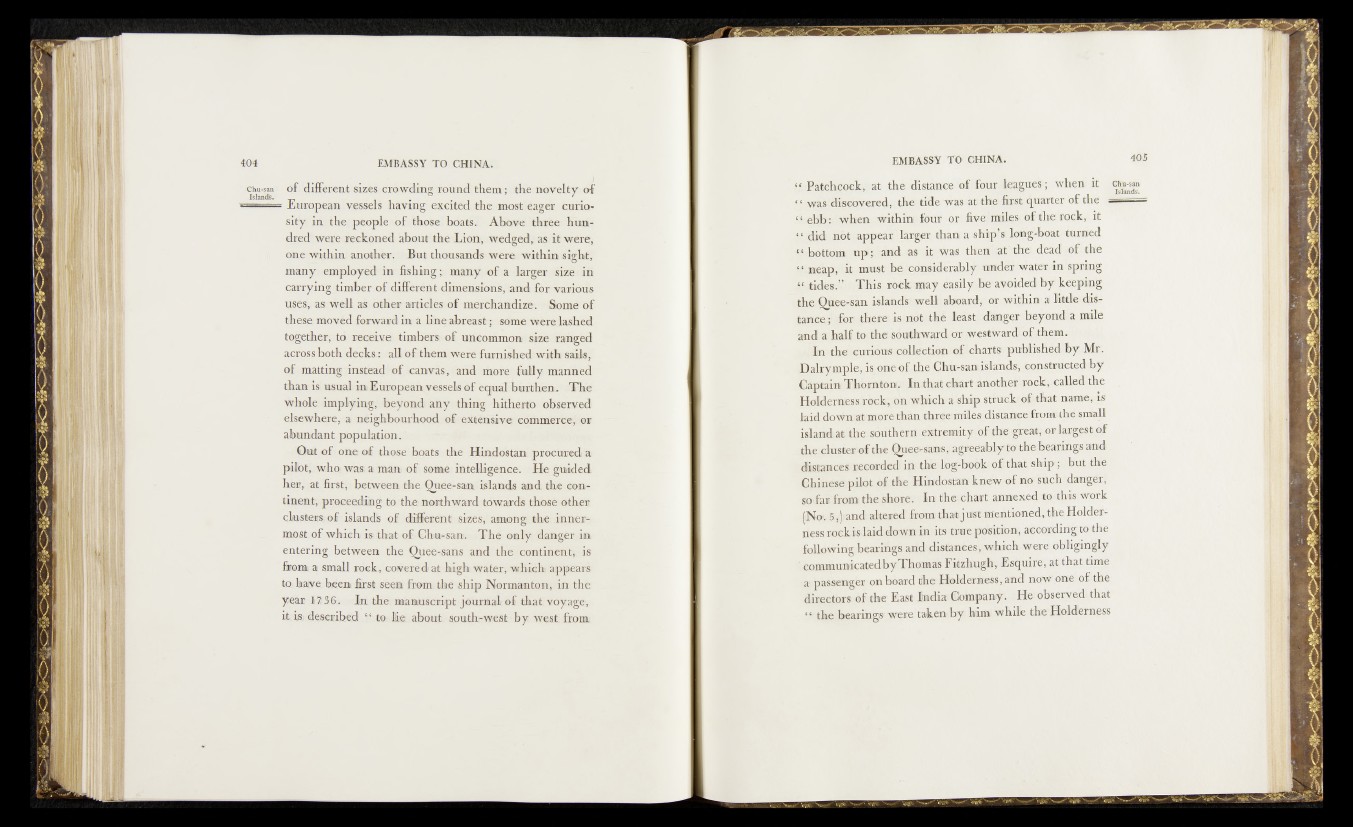
ciw-san of different sizes crowding round them: the novelty of felaads. . . ° a ' . ' r ===== European vessels having excited, the most eager curio-
üity in the. people of those boats. Above three hun-
dred were reckoned about the Lion, wedged, as it were,
one within another. But thousands were within sight,
many e-mptoyed in fishing? many of a larger size in
carrying timber of different dimensions, and for various
uses, as well as other articles of merchandize Some of
these moved forward in a line abreast; some were lashed
together, to receive timbers; of uncommon size ranged
across both decks.: all of them were furnished with sails,
of matting instead of canvas, and more fuily manned
than is usual in European vessels ©f equal burthen. The
whole implying, beyond any thing hitherto observed
elsewhere, a neighbourhood of extensive commerce, or
abundant population.
Out of one of those boats the Hmdostan procured a
pitot, who> was; a man of some irrtetlii-gence. He gnided
her, at first, between the Quee-san islands aaad, the continent,
proceeding to the: northward to wards those other
chaster®; of islands of different «zes,. among the inner-
most of which is that of Ghn-sam. Thé only: danger in
entering between the Quee-sans and the g continent;.- is
from a small rock, covered at high water, which appears
to have been first seen from, the ship Normanton, in the
year 17i3te in the, manuscript journal off that voyage:,
it i& described “ te.-fe about south-west by west from
“ Patcheock, at the distance of four leagues ; when it cfa-sav
“ was discovered, the tide was at the first quarter of the “
“ ebb : when within four or five. miles* óf the rock, it
“ did iiét.appear larger than a ship’s long-boat turned
“ bottom up; and as it was then, at'the: dead of the
neapv it must be considerably under w a » in Spring
“ tides.” This rock may easily'Be^avoided; by keeping
the Quee-san islands well aboard, or within a little distance;
for there is not the least danger beyond a mile
and a half to the southward or- westwardioLthem.
In the curious collection of charts' published by Mr.
rD^Irymple^is tin^^ the Chn-sanislands, constructed by
flapfeHUR Thorntom. In. that chart another rock,, called the
Hold®66$$rock, on which ai rship struck of. that name; is
hid down at more than three milesdistaiacefrom the small
island-at the southern extremity of the greatf; or larges*of
the duster of the Quee-sans, agreeably totheferings and
distaitce^ reeordrf! in the log-book of that ship’ f but the
€hfl*pif#crt.of the Hihdospn knew of no w&clwjfeBgdr|
sötfrrfroör the shorn In tik® chart annexedw/tbiis work
(iNoi..^|fand: alteredfrom that just mentioned;,.the Holder-
ness ruekis-laid;down in; it® true position, accordirig toithf
following bearings audtdistfances , which were ©Migingly
commraiiicateciSyThamsts Fkzhugh E^pdre?, at that time
a pa-ssenger on board the’ BoMertess, and mowpne,o£ thé
directors of the last India; Company. He obseryedUhat
“ the bearings' were taken by Mm' while the KMLdSerness